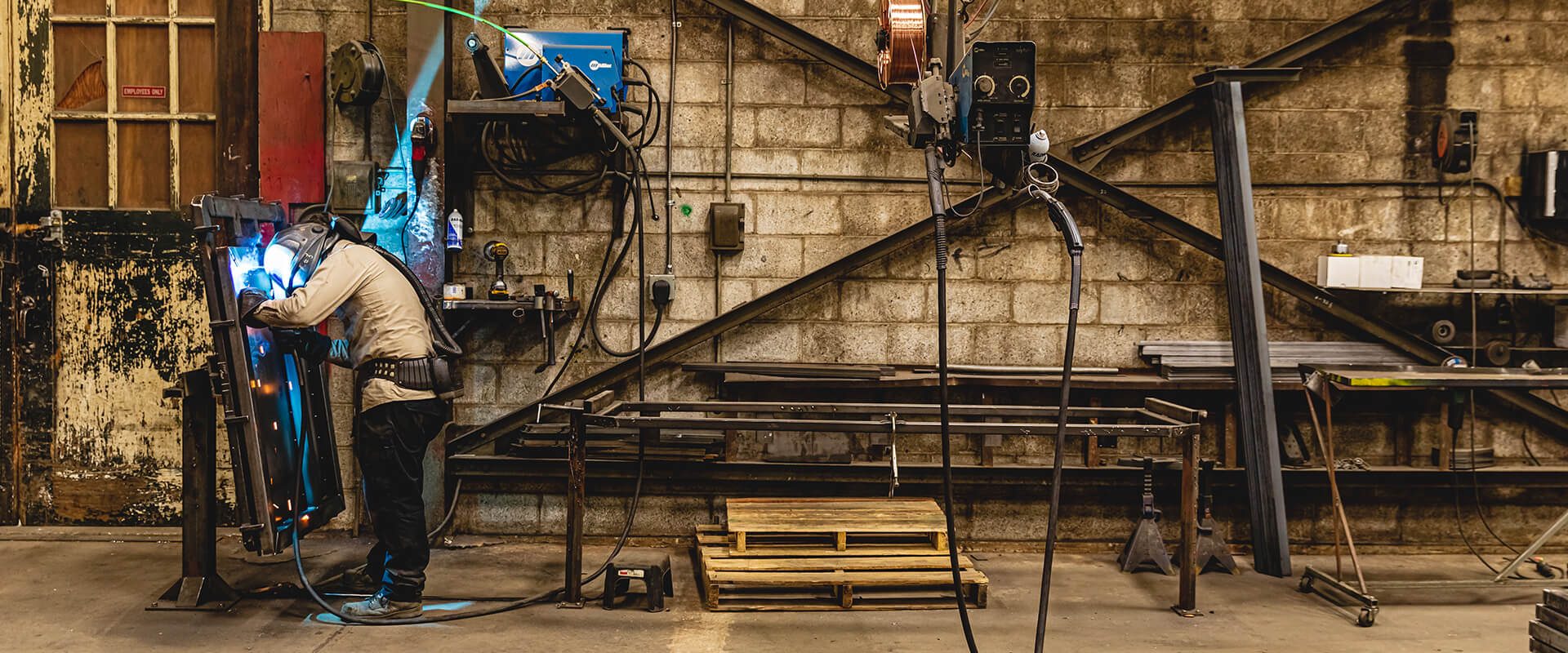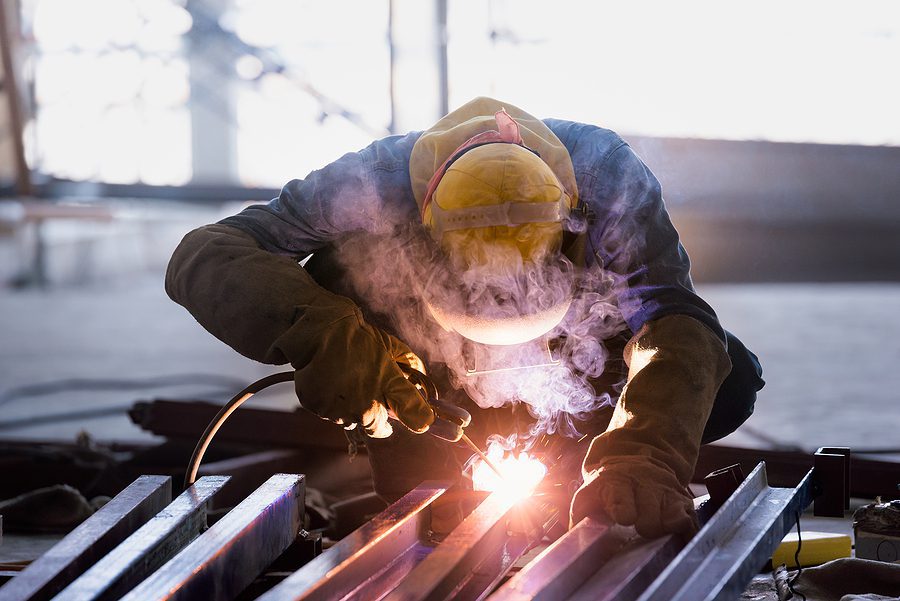How to detect and repair weld flaws in Montana Mobile Welding and Repair Belgrade Welding
Everything about Welding: Key Insights Into Techniques and Best Practices for Success
Welding encompasses a variety of techniques, each suited for particular products and applications. Recognizing these methods, such as GMAW, SMAW, and TIG, is important for accomplishing suitable outcomes. The ideal devices and safety and security methods can not be neglected. As preparation and troubleshooting play vital functions in the welding process, grasping these aspects can greatly improve the high quality of the final item. What are the key variables that guarantee an effective weld?
Recognizing Various Welding Strategies
Welding methods encompass a variety of approaches, each fit to certain applications and products. Among one of the most typical methods are Gas Metal Arc Welding (GMAW), Secured Steel Arc Welding (SMAW), and Tungsten Inert Gas Welding (TIG) GMAW, also understood as MIG welding, is popular for its speed and versatility, making it excellent for thin products. SMAW, or stick welding, is preferred for its simplicity and performance in outside settings, specifically with thicker metals. TIG welding supplies precision and control, making it ideal for elaborate job and non-ferrous steels (Welding). Each strategy has its special benefits and factors to consider, allowing welders to choose the most effective approach based on the task's requirements, product type, and preferred results. Understanding these methods is necessary for effective welding
Essential Welding Devices and Tools
While various welding strategies call for particular abilities, the appropriate equipment and tools are just as important for accomplishing high quality outcomes. Important welding devices includes welding machines, which differ depending on the technique-- such as MIG, TIG, or stick welding. Safety equipment, consisting of handwear covers, headgears, and aprons, guarantees safety and security and convenience throughout the process. In addition, clamps and fixtures aid protect materials in area, making certain accuracy in welds. Consumables like welding rods, cable, and protecting gas are likewise essential parts that affect the quality of the weld. Additionally, devices such as cutters and mills help with surface prep work and post-weld finishing, adding to an expert outcome. Buying top quality tools eventually enhances the performance and efficiency of welding jobs.
Security Practices in Welding
Correct safety practices are vital in the welding industry to shield employees from prospective hazards. Welders need to put on ideal personal protective equipment (PPE), consisting of helmets with proper shading, handwear covers, and flame-resistant apparel. Ample ventilation is important to lower exposure to harmful fumes and gases created throughout the welding procedure. Furthermore, workers should be learnt the proper handling of welding tools to stop crashes. Fire security procedures, such as keeping flammable products away from the welding location and having fire extinguishers readily offered, are required. Regular evaluations of equipment and work areas can aid determine potential threats before they cause crashes. By sticking to these safety methods, welders can produce a much safer working environment and minimize dangers related to their profession.
Readying Products for Welding
Preparing materials for welding is an essential action that considerably affects the top quality and honesty of the last item (Montana Mobile Welding and Repair Welding). Appropriate prep work entails cleaning the surfaces to eliminate contaminants such as corrosion, dust, and oil, which can endanger the weld. Strategies such as grinding, fining sand, or utilizing solvents are frequently utilized to accomplish a clean surface. Furthermore, making certain that the materials fit with each other well is vital; spaces can result in weak welds. It's likewise important to think about the positioning and positioning of the parts, as this will certainly influence the ease of welding and the last result. Finally, choosing the appropriate filler material and guaranteeing compatibility with the base steels is essential for attaining solid, sturdy welds
Tips for Getting High-Quality Welds
Achieving high-quality welds requires attention to detail and adherence to best techniques throughout the welding procedure. Proper joint prep work is crucial, making sure surface areas are complimentary and tidy from contaminants. Choosing the appropriate filler material and welding technique based upon the base steels is crucial for suitable bonding. Keeping regular travel speed and angle while welding can promote and stop flaws harmony. Additionally, controlling heat input is crucial; too much warm can cause bending and More Help damaged joints. If required, frequently evaluating the welds throughout the procedure allows for prompt changes. Ultimately, using proper post-weld therapies, such as cleansing and tension relief, can improve the toughness and honesty of the weld, ultimately guaranteeing a successful end result.
Fixing Usual Welding Issues
Welding commonly provides obstacles that can affect the quality and honesty of the end product. Usual concerns such as porosity, irregular weld beads, and overheating can occur, each needing particular fixing strategies. Understanding these troubles is essential for welders to boost their skills and attain ideal outcomes.
Porosity Troubles Described
Porosity can usually be overlooked, it continues to be a crucial concern in welding that can compromise the honesty of a finished product. Porosity describes the existence of small gas pockets within the weld bead, which can weaken the joint and lead to early failing. This problem usually emerges from impurities, wetness, or inappropriate securing gas coverage during the welding procedure. To mitigate porosity, welders ought to validate that the base materials are completely dry and clean, use suitable securing gases, and maintain regular welding specifications. Routinely examining the equipment and atmosphere can likewise aid identify potential problems prior to they materialize in the weld. Addressing porosity effectively is vital for accomplishing solid, sturdy welds that fulfill top quality standards.

Inconsistent Weld Beans
Inconsistent weld beads can substantially influence the top quality and strength of a completed item. Various variables add to this issue, including inappropriate see it here travel rate, inaccurate amperage settings, and inconsistent electrode angles. When the welder moves also quickly, a bead may appear narrow and do not have penetration, while moving as well slowly can cause excessive accumulation. Additionally, making use of the wrong amperage can result in either undercutting or too much spatter, both of which concession weld honesty. The welder's technique, such as irregular lantern movement, can likewise cause irregular grain look. To reduce these troubles, welders must concentrate on keeping steady, controlled movements and making sure correct devices setups to accomplish uniformity in their welds. Uniformity is crucial to attaining trusted and strong welds.
Overheating and Warping Issues
Excessive warmth during the welding procedure can result in considerable getting too hot and buckling issues, affecting the architectural integrity of the work surface. These issues often show up as distortion, which can jeopardize placement and fit-up, making more assembly challenging. Aspects adding to overheating include the option of welding specifications, such as voltage and travel speed, along with the kind of material being bonded. To alleviate these problems, welders should maintain constant traveling speed and suitable heat input while keeping track of the automotive welding workpiece temperature level. Furthermore, preheating or post-weld warm treatment can aid relieve anxieties brought on by rapid air conditioning - Belgrade. Routine assessment and adherence to best techniques are vital in preventing overheating and guaranteeing the long life and reliability of welded structures
Frequently Asked Concerns
What Are the Occupation Opportunities in the Welding Sector?
The welding market provides varied job chances, including settings as welders, instructors, assessors, and designers. Professionals can work in production, building, aerospace, and vehicle fields, profiting from strong demand and competitive wages in various functions.
Exactly How Can I Boost My Welding Speed Without Compromising High Quality?
To improve welding rate without compromising quality, one must exercise effective methods, maintain equipment, optimize settings, and enhance hand-eye sychronisation. Routine training and seeking responses can also substantially contribute to attaining quicker, high-quality welds.
What Accreditations Are Offered for Welders?
Various accreditations exist for welders, including those from the American Welding Culture (AWS), the National Facility for Building And Construction Education And Learning and Study (NCCER), and numerous industry-specific organizations. These credentials improve employability and demonstrate skill effectiveness.
Exactly How Does Welding Influence the Characteristics of Metals?
Welding affects the residential properties of metals by changing their microstructure, which can cause adjustments in stamina, ductility, and hardness. Warmth input and air conditioning prices during the procedure substantially affect these material attributes.
Can I Weld Dissimilar Metals Together?
